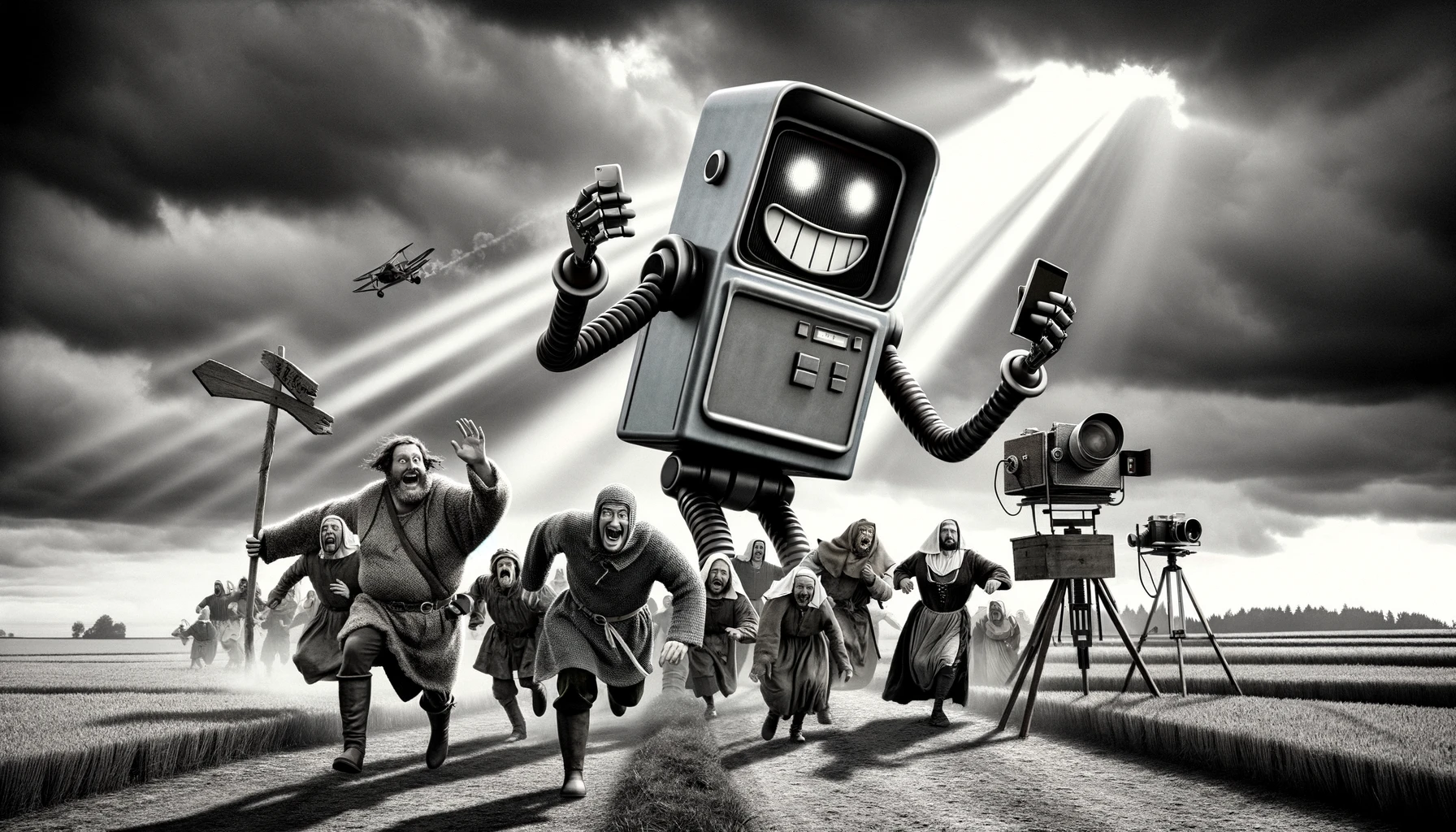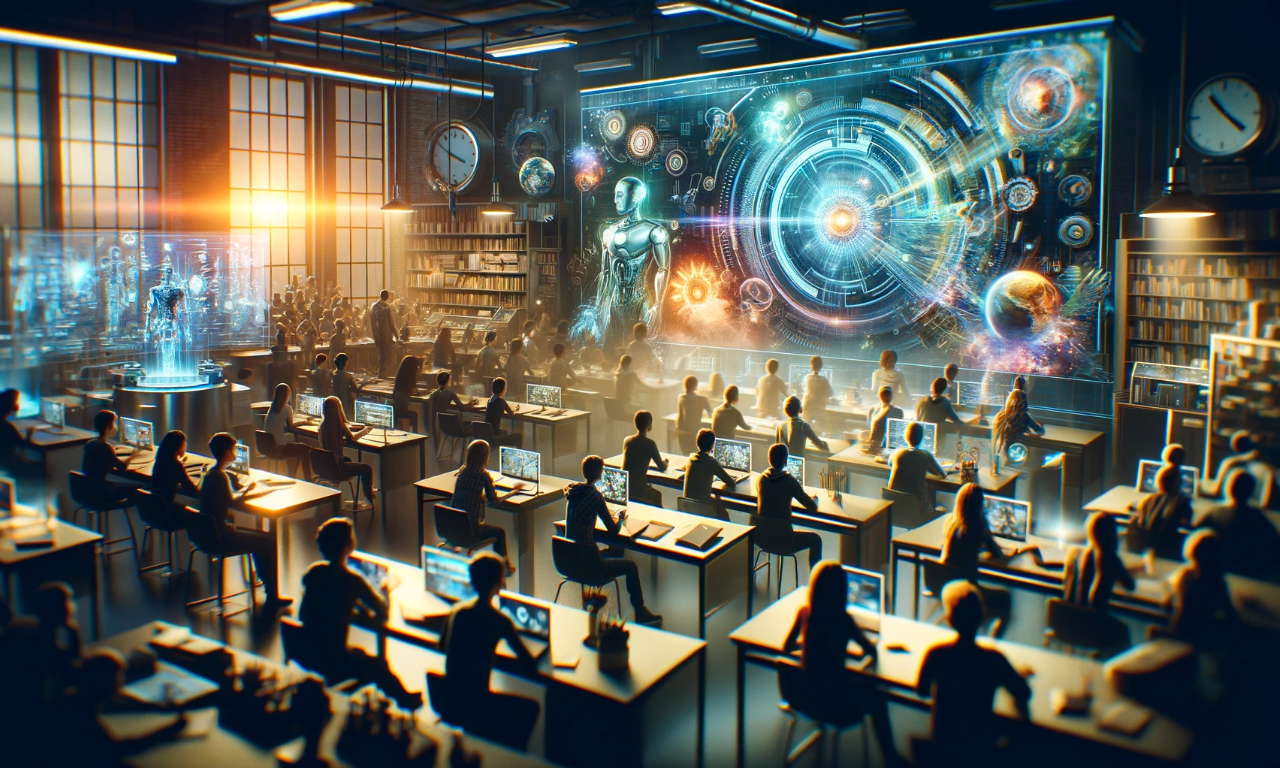Lately, I’ve been meeting a lot of people who seem to think AI is the evil synthetic overlord coming to snatch away their humanity. Honestly, the hysteria is quite amusing. It’s as if we’re in a Monty Python sketch where villagers are running around yelling, “AI! Run for your lives!” To put this into a somewhat saner perspective, let’s compare the development of AI to the evolution of photography—because why not?
The Dawn of Photography: When Eight Hours for a Photo Was Considered Fast
Back in 1826, Joseph Nicéphore Niépce took the world’s first documented photograph, and it only took a breezy eight hours of exposure to capture a fuzzy view from his window. I bet Niépce would have found today’s instant selfies downright magical, if not slightly terrifying. Fast forward 200 years, and here we are, taking megapixel pictures of our brunch with our phones. Oh, how far we’ve come—from squinting at grainy images to documenting every mundane detail of our lives in HD.

200 Years of Photographic Progress: Patience, Dear Luddites
Two centuries of photographic evolution brought us from daguerreotypes, which sound more like a medical condition than a photographic process, to the digital wonders of today. Along the way, we battled with rolls of film, darkroom chemicals, and those dreadful family photo albums. The journey from a primitive pinhole camera to the latest smartphone camera represents an impressive, if somewhat leisurely, technological crawl.
AI: The Speedy Gonzales of Technological Advancement
Now, let’s talk about AI. In just two years, AI has made strides so fast it would make Speedy Gonzales look like a tortoise. Natural language processing, image recognition, AI art—it’s as if someone hit the fast-forward button on technological progress. If you look at the AI technology available to the public today, we’re talking about a factor of 100 times faster advancement than the 200-year evolution of photography. Yes, really. If AI were a sprinter, it would be winning gold medals before the rest of us even found our running shoes.
Overcoming Aversion: Embrace the Synthetic, Resistance is Futile
Despite this meteoric rise, many people seem to think AI is here to steal our jobs, our identities, and possibly our souls. But, let’s be real. Just as photography evolved from an obscure hobby to a ubiquitous tool, AI too will become an integral part of our lives. So, let’s put down the pitchforks and stop treating AI like the Black Knight from Monty Python, futilely shouting, “It’s just a flesh wound!” while it transforms our world.
Conclusion: The Future of AI and the Grand Comedy of Human Evolution
As we whizz through these technological advancements, it’s crucial to remember that every innovation faced its fair share of paranoia and skepticism. The progress from squinting at fuzzy photographs to oversharing our lives in stunning detail is a testament to human adaptability and, let’s be honest, our obsession with documenting everything.
AI’s rapid development might seem daunting, but instead of fearing our synthetic friends, let’s laugh, adapt, and maybe even take a selfie with our new AI overlords. After all, if history has taught us anything, it’s that today’s terrifying technology is tomorrow’s trivial tool. So, here’s to a future where AI, like photography, becomes an indispensable part of our daily lives—whether we’re ready for it or not. Cheers!



